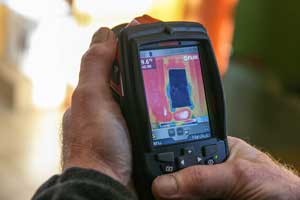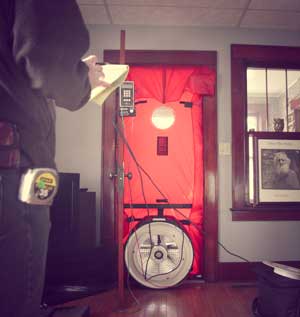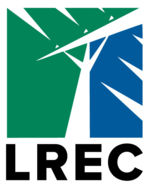Curious How Your Home Measures Up?
 You can know how energy efficient your home is with our Home Energy Audits Program. A certified energy auditor will come and run a series of tests that will reveal ways that you can save more on your energy costs.
You can know how energy efficient your home is with our Home Energy Audits Program. A certified energy auditor will come and run a series of tests that will reveal ways that you can save more on your energy costs.
The entire home energy audit process takes about two hours and includes the following:
- A thorough check of the home
- Determination of thermal boundaries
- Blower door test that depressurizes the house
- Analysis of the home with a thermal imaging camera.
- Following the audit, homeowners will receive a detailed report on their home that includes recommended energy saving measures
All measures include estimated costs, annual savings, simple payback, and savings-to-investment ratios based on current energy prices.
 Depending on the amount of suggested measures implemented following the audit, homeowners may be eligible for rebates of up to $100 to defray a portion of the $300 audit expense. Members with electrically heated homes are eligible for up to $500 in rebates for completed weatherization measures.
Depending on the amount of suggested measures implemented following the audit, homeowners may be eligible for rebates of up to $100 to defray a portion of the $300 audit expense. Members with electrically heated homes are eligible for up to $500 in rebates for completed weatherization measures.
Although the Home Energy Audit Program is strictly a residential program, there are other energy grants available for commercial buildings. For more information or to arrange a home energy audit, contact LREC at (800) 552-7658.
Feature: What to Expect as a Homeowner
By Heidi Kratzke
With our house recently reaching the 90-year age mark, my husband and I were interested in learning about the energy efficiency of the aging structure. To our pleasant surprise, LREC contractor LeRoy Vandermay’s energy audit on our home revealed that despite our home’s age, it is still relatively energy efficient.
 Vandermay started out the energy audit in our unfinished basement where he examined the furnace, water heater, and ductwork for the heating/cooling system. He asked us questions about the age of our furnace and whether or not we’ve had any issues with the unit. According to his combustion analyzer, the furnace was in need of a tune and clean.
Vandermay started out the energy audit in our unfinished basement where he examined the furnace, water heater, and ductwork for the heating/cooling system. He asked us questions about the age of our furnace and whether or not we’ve had any issues with the unit. According to his combustion analyzer, the furnace was in need of a tune and clean.
Vandermay then took our home’s measurements to determine the square feet of conditioned space on the first and second floors. He calculated the depth of the walls and assessed which walls were dense packed with fiberglass insulation.
He spent time investigating the insulation coverage in the attic and in the four knee wall attics on the second floor. It was recommended that we insulate and weather strip the doors to conserve energy.
We were asked how many compact fluorescent bulbs we had installed in our home and were later provided with a summary of CFL savings on the recommendations page in Vandermay’s report. He also inquired about the number of carbon monoxide detectors and smoke alarms currently installed in the home.
Vandermay then set up a large canvas and fan over our front door to depressurize the house for the blower door test. After our home was depressurized, he guided us around the house with a thermal imaging camera that revealed cold spots in our walls. It was with the camera that we were able to determine an area on the second floor where there was a large gap in insulation.
A few days after the audit, Vandermay provided us with a detailed report on our home that included his energy saving recommendations. The measures included only material costs, with the assumption that we would provide the labor. We found the listing of estimated costs, annual savings, simple payback, and savings-to-investment ratios to be extremely easy to understand and helpful in determining which measures should receive the highest priority.
In our particular case, the recommendations fell into the following categories: attic insulation, knee wall insulation, pipe wrap, low flow showerhead, window sealing, and CFL lighting. Although our home is relatively energy efficient, we plan to implement the suggested changes to be even more efficient with both our energy use and money spent.
 Lake Region Electric Cooperative
Lake Region Electric Cooperative